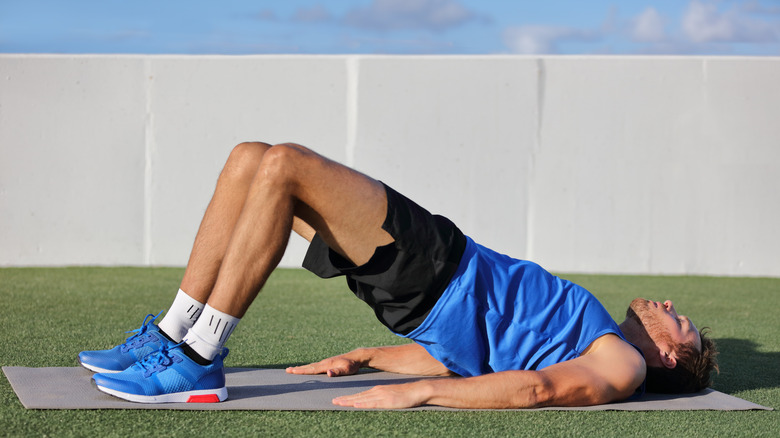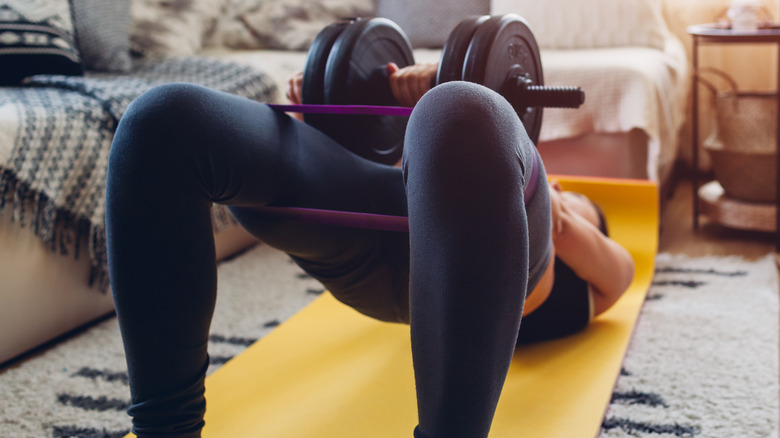This Glute Bridge Variation Will Help You As You Get Older
Exercise is good for you at any age, but it is especially beneficial as you get older. It can help you maintain healthy bones and muscles, according to the Centers for Disease Control and Prevention. Older adults can also reap several benefits by engaging in a moderate amount of physical activity on a routine basis. Strength training, in particular, offers many advantages, and one exercise that may help you as you age is the weighted glute bridge.
The glute bridge is already a beneficial butt exercise because it engages the gluteus maximus, often referred to as your glutes. Your glutes help you in many daily activities, such as walking and climbing stairs. However, the advantages of strong glutes are not limited to what you can do with your legs. You also use your glutes in many other activities in daily life. Strong glutes also notably lead to a solid core, which helps strengthen your back and knees, according to Shape. When you perform a glute bridge with weights, you're strengthening those muscles. Over time, the strength and mobility you gain through this specific exercise will be noticeable in everyday life. That being said, it's important to perform your glute bridges with weights properly to avoid injury and receive the full benefits.
How to do a weighted glute bridge
To start, you will need to be on your back with your arms by your sides and your knees bent. Your feet should be flat on the floor and about hip-width apart. As you begin, hold your medium-weight dumbbells on your hips, and then lift your hips off of the floor. To avoid arching your back, try to imagine a straight, diagonal line between your hips and shoulders. Pause for a few seconds in this position, and then lower your hips back onto the floor.
Certified strength and conditioning specialist Pete McCall recommends doing two to three sets of 15 to 20 repetitions three times a week, according to Livestrong. When the glute bridge does not feel as challenging as it once did, it may be time to level up and add heavier weights to the routine. To make this exercise even more challenging, you can use a resistance band on your thighs above your knees. This will engage the muscles on the sides of your hips.
You should always check with your physician if you have any health problems or concerns before starting a new exercise regimen. A medical professional can point you in the right direction as you look to improve your overall well-being.

